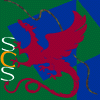
Computer Science Department
School of Computer Science, Carnegie Mellon University
Semi-Supervised Training of Models for
Appearance-Based Statistical Object Detection Methods
Charles Joseph Rosenberg
May 2004
Ph.D. Thesis
CMU-CS-04-150.ps
CMU-CS-04-150.pdf
Appearance-based object detection systems using statistical models
have proven quite successful. They can reliably detect textured,
rigid objects in a variety of poses, lighting conditions and scales.
However, the construction of these systems is time-consuming and
difficult because a large number of training examples must be
collected and manually labeled in order to capture variations in
object appearance. Typically, this requires indicating which regions
of the image correspond to the object to be detected, and which belong
to background clutter, as well as marking key landmark locations on
the object. The goal of this work is to pursue and evaluate
approaches which reduce the amount of fully labeled examples needed,
by training these models in a semi-supervised manner. To this end, we
develop approaches based on Expectation-Maximization and self-training
that utilize a small number of fully labeled training examples in
combination with a set of weakly labeled examples. This is
advantageous in that weakly labeled data are inherently less costly to
generate, since the label information is specified in an uncertain or
incomplete fashion. For example, a weakly labeled image might be
labeled as containing the training object, with the object location
and scale left unspecified. In this work we analyze the performance
of the techniques developed through a comprehensive empirical
investigation. We find that supplementing a small fully labeled
training set with weakly labeled data in the training process reliably
improves detector performance for a variety of detection approaches.
The outcome is the identification of successful approaches and key
issues that are central to achieving good performance in the
semi-supervised training of object detection systems.
138 pages
Return to:
SCS Technical Report Collection This page maintained by reports@cs.cmu.edu
School of Computer Science homepage